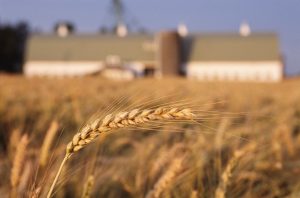 Whether in agriculture or any other business, if you don’t have enough money coming in to pay the bills, it’s hard to find the time or resources for anything other than working to turn a red budget spreadsheet black.
Whether in agriculture or any other business, if you don’t have enough money coming in to pay the bills, it’s hard to find the time or resources for anything other than working to turn a red budget spreadsheet black.
A wheat farmer friend from Washington recently told me that current prices are $4/bushel, the same as 40 years ago. Take into account inflation, and that’s a significant decline. Nationally, the USDA predicts that net farm income will drop by almost 9 percent this year, the fourth year in a row of declines after reaching a record high in 2013. Farmers also face enormous volatility in income, with fluctuations in yield, demand, as well as crop and input prices.
It’s no surprise then that environmentalists’ calls to cut crop insurance, disaster programs or other conservation payments fall on deaf ears in the agricultural community – or serve only to raise blood pressure levels across the Corn Belt.
Advocating for sustainability from an ivory tower will never get us anywhere. If we really want to see farmers embrace conservation practices, doing so needs to add value to them and make it easier, not harder, to make a living. Faced with economic uncertainty, it’s human nature to protect family above all else – even if it means choosing short term benefits over stewardship.
[Tweet “Conservation depends on farm profitability, says @FriedmanSuzy @GrowingReturns. Here’s why.https://edf.org/7VL”]
Conservation can protect profits
Environmentalists should invest in creating the business case for sustainable agriculture.
![]() It’s also important to note that conservation is not inherently a drain on the balance sheet for agriculture. In fact, the opposite is true when taking an integrated and multi-year view of farm management and profitability.
It’s also important to note that conservation is not inherently a drain on the balance sheet for agriculture. In fact, the opposite is true when taking an integrated and multi-year view of farm management and profitability.
Contentious debates on Capitol Hill often skip over the valuable role conservation measures can play in protecting farm profits. Practices like using nutrients more efficiently enable farmers to get more bushels per pound of fertilizer. This is a win-win, with farmers getting more value out of the inputs they buy and less fertilizer ending up in the air or water.
Cover crops, more diverse crop rotations, and reduced tillage can deliver more consistent and thus higher yields over time. These practices reduce the negative yield impacts of weather extremes like this weekend’s loss of winter wheat from heavy snowfall in Kansas, improve soil quality, and reduce soil erosion, weeds and pests.
A long-time farmer and advisor to EDF recently told me that by digging into the economics of crop management systems and sustainability practices, he discovered that conservation is a method of profit protection. And this profit protection really shines through if you look at the data for practices in combination and over multiple years.
We need more data and proof
 But right now, we cannot sufficiently document conservation’s ability to protect profits. We need a lot more data on the economics of different conservation practices across key geographies. Instead of pointing fingers and lobbying for cuts to programs that support farmers, environmentalists can and should invest in creating the business case for sustainable agriculture.
But right now, we cannot sufficiently document conservation’s ability to protect profits. We need a lot more data on the economics of different conservation practices across key geographies. Instead of pointing fingers and lobbying for cuts to programs that support farmers, environmentalists can and should invest in creating the business case for sustainable agriculture.
Gathering these data won’t happen overnight, but we’re working on it, as are many others, including the National Corn Growers Association’s Soil Health Partnership, the Conservation Technology Information Center, and many university programs.
Our ability to continue enjoying a diversity and abundance of food depends on the economic viability of farming.
This post originally appeared Ag Web and is used with permission.
Related:
There’s good reason to end the agriculture versus the environment fight >>
Farmers’ voices are essential to figuring out sustainability. Let’s listen up. >>
Why Sonny Perdue should prioritize these 3 farm programs >>










2 Comments
This is a breath of fresh air for farmers. The idea that an important and influential environmental advocacy group like Environmental Defense Fund would step out and want to work with, rather than fight against, farmers creates the possibility of real collaboration. The results are already being felt in the Sacramento Valley in California. Farmers are environmentalists, too, but as EDF points out, sometimes it is tough to make positive changes to farming practices when they risk costing farmers on the bottom line. We in agriculture welcome the opportunity to work with forward thinking conservation groups like EDF to create a new way forward that results in both a healthy, sustainable environment and vibrant farming communities
Les, thank you so much for your kind words and for River Garden Farms’ commitment to stewardship. Sustainability solutions only work if they make economic sense for farmers. That’s one of the many reasons that EDF’s ag program is built on a foundation of listening to and collaborating with farmers. I’m so glad that you also see opportunities for agriculture and conservation groups to work together on our shared goals. I’d be interested in discussing more if you are!